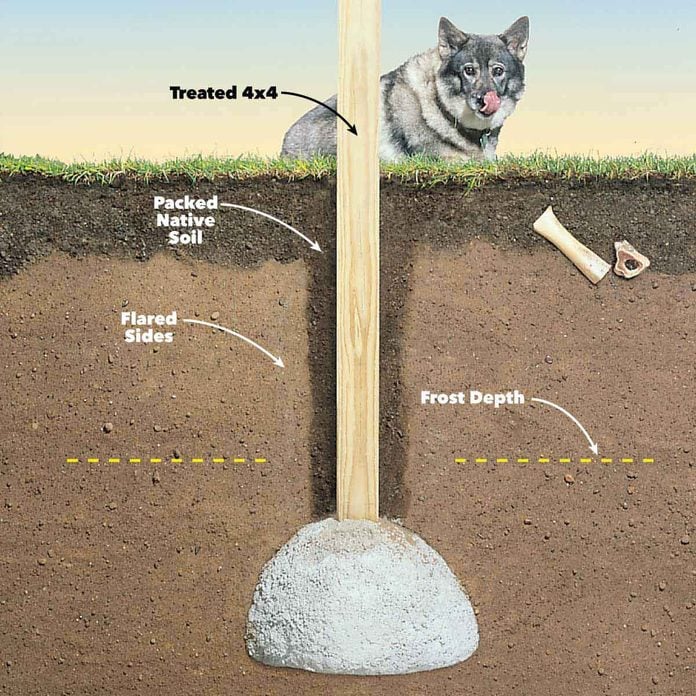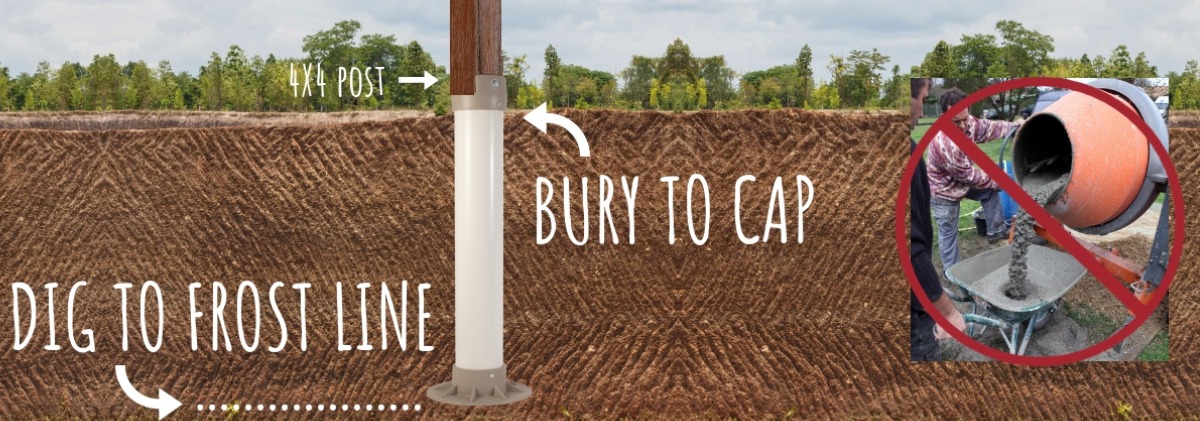Selecting the Right Deck Footings for Stability and Sturdiness
When it concerns developing a deck, one of one of the most critical choices you will make is choosing the appropriate grounds for stability and durability. The long life and safety and security of your deck depend heavily on the sort of footings you choose, as they offer the necessary assistance and security to withstand the examination of time. With a myriad of choices readily available, it can be frustrating to identify which grounds are best fit for your specific requirements. In this conversation, we will discover the different kinds of deck footings, take into consideration the vital aspects to weigh when making a choice, and look into the advantages and disadvantages of various alternatives. By the end, you will have a clearer understanding of the selections at hand and be far better outfitted to make an educated choice for your deck job.
Kinds of Deck Grounds
These grounds are composed of a round opening filled with concrete, which supplies a solid structure for the deck posts. Concrete pier grounds are relatively very easy to mount and offer excellent security, making them a preferred choice for several deck jobs.
These grounds are mounted by screwing them into the ground, which develops a safe and secure structure for the deck. They also permit for very easy change and progressing of the deck if required.
Conversely, some contractors choose precast concrete grounds. These footings are made of sturdy concrete and can be found in numerous sizes and shapes to fit different deck layouts. Precast concrete grounds are practical to install and offer a stable base for the deck framework.
Ultimately, an additional option is the post-in-anchor ground system. This kind of footing involves driving a steel support right into the ground and attaching it to the deck post. It uses adaptability in regards to positioning the deck articles and appropriates for decks with light-weight structures.
When choosing the ideal type of deck ground, it is necessary to think about variables such as dirt problems, deck lots, and neighborhood building ordinance (Deck Footings). Consulting with an expert specialist or architectural engineer can aid make sure the ideal footing is selected for a secure and secure deck
Factors to Think About When Choosing Footings
When selecting the proper footings for a deck, it is important to carefully think about numerous elements such as dirt problems, deck load, and adherence to neighborhood building ordinance. These elements play a significant duty in guaranteeing the stability and sturdiness of the deck structure.
The kind of dirt on which the deck will certainly be developed determines the type of footings called for. On the other hand, decks developed on clay or extensive soils might need footings that can fit the soil's propensity to expand and agreement.
An additional crucial factor is the deck tons. The weight of the deck, consisting of the products utilized and any kind of prospective real-time loads such as furniture or gatherings, should be taken into account when picking footings. The footings need to be designed to bear the weight of the deck and disperse it equally to avoid any structural issues or failures.
Lastly, adherence to neighborhood building regulations is extremely important. Building ordinance differ from region to region, and it is necessary to comply with the details needs established by the regional authorities. Deck Footings. These codes make certain that the deck is built safely and satisfies the necessary standards for architectural stability and load-bearing ability
Concrete Grounds: Cons and pros

Concrete grounds use several advantages and negative aspects when made use of as the structure for a deck. On the positive side, concrete grounds give exceptional security and sturdiness.
An additional advantage of concrete footings is their convenience. They can be poured right into various sizes and shapes to accommodate various deck layouts and arrangements. Concrete grounds can be tailored to fit the certain demands and demands of the deck structure.
Nonetheless, there are also some disadvantages to utilizing concrete footings. This can increase the overall price of the deck task and might require specialist aid.

Helical Piers Vs. Sonotubes: Which Is Better?
In taking into consideration the structure choices for a deck, the comparison between helical piers and sonotubes is vital in identifying the remarkable selection. They are turned right go to my blog into the ground utilizing hydraulic machinery, supplying a secure and durable foundation for the deck.
The helical plates on the piers create a strong hold with the soil, shifting or avoiding any type of movement of the deck. Sonotubes, on the various other hand, depend only on the concrete filling for stability, which may not supply the exact same degree of toughness and resistance.
In regards to installation, helical piers are fairly simpler and faster to install contrasted to sonotubes. The hydraulic machinery utilized to turn the piers into the ground guarantees a fast and reliable procedure. Sonotubes, on the other hand, call for digging holes and putting concrete, which can be labor-intensive and lengthy.
In addition, helical piers are a more functional option. If needed, they can be utilized in various dirt conditions and can be changed or reinforced. Sonotubes, on the other hand, may call for additional support, such as rebar, in particular soil problems or locations with high load demands.
Choosing the Right Footings for Your Deck's Dimensions
For ideal architectural honesty, it is important to carefully choose the proper footings that line up with the measurements of your deck. The measurements of your deck, including its height, width, and length, play a considerable role in identifying the kind and size of footings needed.
When selecting grounds for your deck, it is essential to consider the load-bearing capability of the soil. The weight of the deck, incorporated with the weight of any kind of furnishings or individuals on it, applies a considerable pressure on the footings (Deck Footings). Therefore, it is important to pick grounds that can appropriately sustain this weight without shifting or sinking with time.
The shapes and size of the footings must also be considered. Larger decks with better dimensions require larger footings to supply adequate stability and assistance. The form of the grounds, whether they are round or square, depends upon the design and useful link design of the deck. Additionally, the depth at which the grounds are installed need to be identified based upon the frost line in your region more information to protect against any type of heaving or changing due to freezing temperature levels.
Verdict
In verdict, selecting the best deck footings is vital for making sure stability and resilience. Factors such as the type of grounds, the deck's dimensions, and the pros and disadvantages of different choices need to be considered.
These grounds are composed of a round opening filled up with concrete, which gives a solid foundation for the deck blog posts. Concrete pier footings are fairly very easy to install and supply exceptional stability, making them a popular choice for several deck jobs.
Precast concrete grounds are practical to install and supply a steady base for the deck structure.
It provides adaptability in terms of positioning the deck posts and is suitable for decks with light-weight structures.
Concrete footings offer numerous advantages and downsides when used as the structure for a deck.
Comments on “A Strong Foundation for Your Sanctuary: Checking Out the Significance of Deck Footings in Outdoor Frameworks”